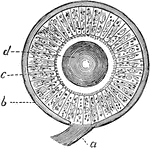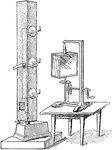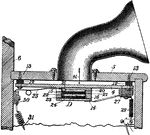Clipart tagged: ‘sound waves’

Sense of Hearing
Hearing is the perception of certain vibrations of bodies. These vibrations give rise to sound waves.…

Sense of Hearing
Hearing is the perception of certain vibrations of bodies. These vibrations give rise to sound waves.…

Sense of Hearing
Hearing is the perception of certain vibrations of bodies. These vibrations give rise to sound waves.…

Sense of Hearing
Hearing is the perception of certain vibrations of bodies. These vibrations give rise to sound waves.…

Manometric Flame Apparatus
Koenig's manometric flame apparatus was a laboratory instrument invented in 1862 by the German physicist…

Sound Making
Sound making amoung animals serves to aid in frightening away enemies or in warnng companions of their…

Telephone Transmitter Carbon Microphone
Edison invented and developed the carbon microphone used in all telephones along with the Bell receiver…

Tin Can Telephone
A tin can telephone is a type of voice-transmitting device made up of two tin cans, paper cups or similar…